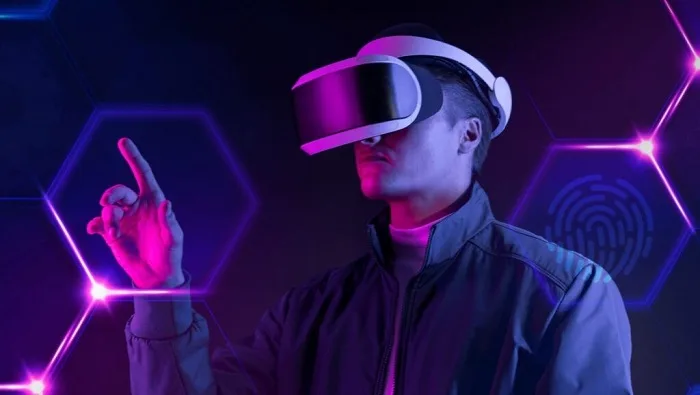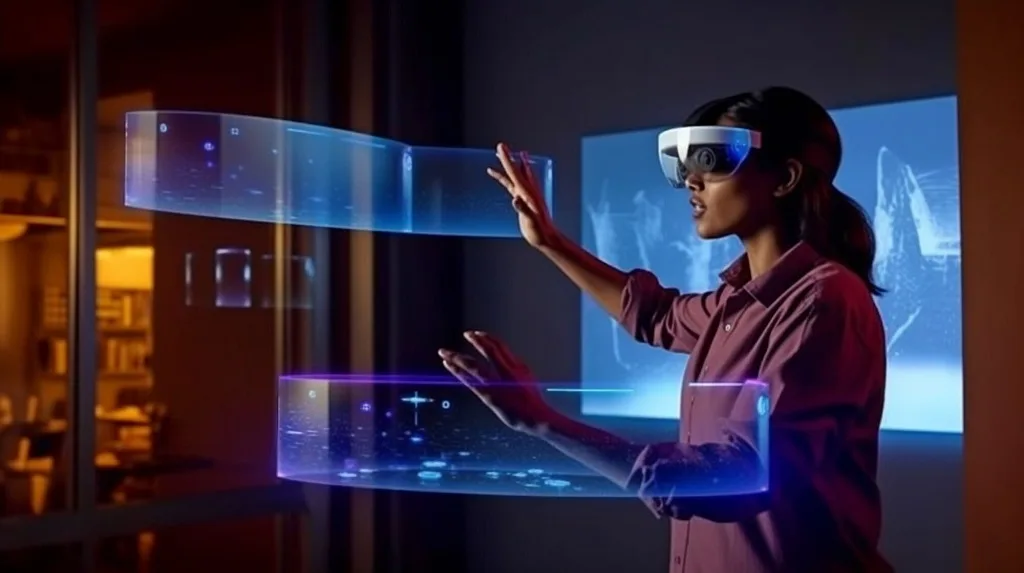Tangible Virtual Reality Tech Review

Tangible virtual reality (VR) represents the next frontier in immersive technology, where users can physically interact with virtual environments in a way that feels real. This advancement is poised to revolutionize how we experience digital content, bringing a tactile dimension to virtual experiences that were previously limited to visual and auditory sensations.
The technology behind tangible VR is rapidly evolving, with significant strides being made in haptic feedback, force feedback, and motion tracking systems. These components work together to create a seamless and believable virtual experience, where users can feel the texture, weight, and resistance of objects in a virtual space. The implications of this are vast, ranging from enhanced gaming experiences to more effective training simulations in various industries.
The Current State of Tangible VR Technology
As of today, tangible VR is still in its developmental stages, but it is progressing quickly. Major tech companies and startups alike are investing heavily in research and development to bring this technology to market. Haptic feedback gloves, for instance, are one of the most promising developments, allowing users to ‘touch’ and manipulate virtual objects as if they were real. Additionally, force feedback devices are being refined to provide a more realistic sense of physical interaction within virtual environments.
Despite these advancements, there are still significant challenges to overcome. The technology needs to become more affordable and accessible to the general public, and the integration of these tactile systems into existing VR platforms must be seamless to ensure a smooth user experience. However, the progress made thus far indicates that tangible VR is not just a distant dream but a soon-to-be reality.
Applications and Industries Benefiting from Tangible VR
Tangible VR has the potential to transform a wide range of industries. In the healthcare sector, for example, surgeons can use tangible VR simulations to practice complex procedures in a controlled, risk-free environment. This not only enhances their skills but also improves patient outcomes. Similarly, in the field of education, students can benefit from hands-on learning experiences in virtual settings, making abstract concepts more concrete and easier to understand.
The gaming industry, naturally, is also set to benefit immensely from tangible VR. Gamers will be able to physically interact with their game environments, creating a more immersive and engaging experience. Furthermore, the use of tangible VR in professional training, such as military or engineering simulations, can provide more realistic and effective training scenarios, thereby improving overall performance and safety.
Technological Advancements Driving Tangible VR
The rapid development of haptic technology is the primary driver behind tangible VR. Haptic systems are becoming increasingly sophisticated, capable of simulating a wide range of tactile sensations. These systems are often combined with advanced motion tracking technology, which allows for precise detection of user movements and provides appropriate feedback in real-time.
Another crucial advancement is in the area of force feedback. This technology is essential for simulating resistance and weight, making interactions with virtual objects feel more realistic. As these technologies continue to improve, the gap between virtual and physical realities will continue to narrow, making tangible VR a viable option for more applications.
Moreover, improvements in computing power and graphics processing units (GPUs) have enabled more complex and detailed virtual environments, which are essential for creating a convincing tangible VR experience. As the hardware becomes more powerful, the potential for increasingly realistic and immersive virtual experiences grows.
Challenges and Limitations of Tangible VR
Despite its promise, tangible VR faces several challenges that must be addressed before it can become mainstream. One of the most significant hurdles is cost. The development and production of haptic and force feedback devices are expensive, which currently limits their availability to a broader audience. As with many emerging technologies, economies of scale and further innovation will be required to reduce costs.
Another challenge is the complexity of integrating tangible VR into existing systems. Developers must ensure that these new tactile technologies are compatible with current VR platforms and content. This requires significant software development and testing to ensure a seamless user experience. Moreover, the latency of haptic feedback systems must be minimized to prevent any disconnect between the user’s actions and the tactile feedback received.
User comfort and safety are also concerns. Extended use of tangible VR systems may cause physical strain or discomfort, particularly if the equipment is not ergonomically designed. Addressing these issues will be critical to the widespread adoption of tangible VR technology.
Finally, there is the challenge of creating content that fully leverages the capabilities of tangible VR. Content creators must develop experiences that not only utilize the tactile features of this technology but also do so in a way that enhances the overall user experience, rather than feeling like a gimmick.

Future Predictions and Evolution of Tangible VR
The future of tangible VR looks promising, with potential applications extending far beyond gaming and entertainment. In the next few years, we can expect to see more industries adopting this technology as it becomes more refined and accessible. The healthcare industry, for example, could use tangible VR for more advanced surgical simulations, while the automotive industry could benefit from virtual prototyping and testing of new vehicle designs.
As technology continues to advance, tangible VR will likely become more integrated into our daily lives. From virtual meetings where participants can shake hands to online shopping experiences where customers can ‘feel’ products before purchasing, the possibilities are endless. The continued development of haptic and force feedback technologies will be key to unlocking these new opportunities.
In conclusion, tangible VR represents a significant leap forward in immersive technology, with the potential to revolutionize multiple industries. While there are challenges to overcome, the progress made thus far is encouraging. As this technology continues to evolve, it will undoubtedly become a vital tool in various fields, offering new ways to interact with and experience the digital world.
